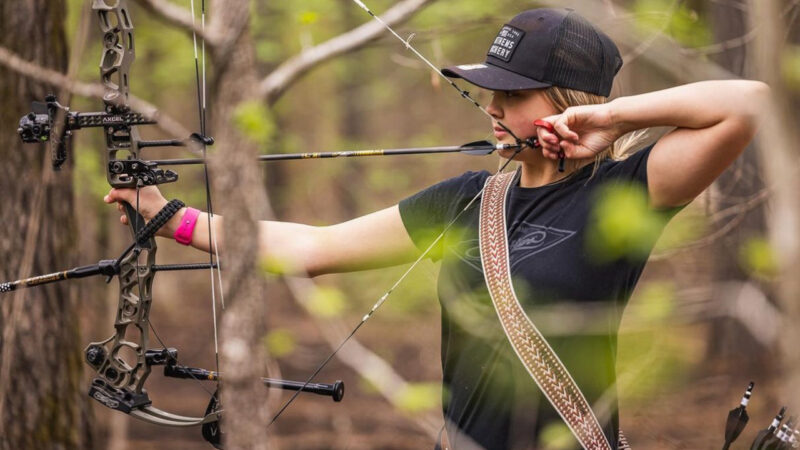A thick fog lay on the ground in front of me, like a warm grey blanket rolling out over the forest floor. Perched in a climbing tree stand high up in a beech tree, I stood with my shoulder wedged against the cold bark, hands tucked in my pockets.
It was that time of morning where the sun hadn’t made its way all the way up, yet you could see everything in front of you.
The world was quiet.

And then the ch-ch-ch of an animal walking through the damp leaves at a steady pace. I reached for my bow, moving slowly in the quiet stillness, the handle cold against my palm.
A 6-point buck made his way through the oak trees in front of me, walking slowly yet steadily towards the only open shooting lane I had. Rolling my shoulders to loosen my muscles, I extended my compound outward to come to full draw.
Ping.
The tinny sound of my bottom cam hitting the rail of my climber bar echoed through the woods. The buck stopped and looked up, locking eyes. In a split second, he was gone. I stood frozen, cursing myself for not being more careful.

For years after that foggy morning occurrence, I swore off bows with a long ATA, as if it was somehow the fault of my bow and not my own carelessness. Fast forward 15 years, and I have come to the realization that the ATA or AMO of your bow doesn’t particularly matter; how you hunt and your awareness of your archery equipment is ultimately what will lead you to more success.
I know many hunters who swear up and down that their short bow is the best out there for hunting; easier to get into a ground blind, not having to worry as much about tree stand incidents such as my own, and the ease with which it fits behind the seat of the truck. I tend to nod and smile, knowing that their bow may very well be what’s best for them.
Getting more into the technical side of ATA in compound archery, it’s not as complicated as you may think. ATA is simply the axle to axle length, and it can vary greatly from bow to bow.
Short ATA bows are sought after for their mobility; they are also a little faster than longer bows.
Bows with a longer ATA tend to have a smoother cycle when drawing them back. Longer ATA is extremely popular in the target archery side of things where comfort is key, however I see it as something that can equally translate to hunting. Comfort means that you’ll be more stable when holding at full draw, resulting in more accurate shots. A bow with long ATA can also provide longer draw length, making it preferable to those with longer arms.

ATA also effects the angle of the bowstring. The shorter the bow, the more acute the angle of the string will be. A sharply pinched string on a short ATA bow can place the peep sight further from your face, thus making it harder to see through it. It can also effect your anchor point.
Yet, hunting with a 64 inch longbow for the past 3 years has vastly changed my outlook. It may be a little more difficult to squeeze into a small pop up blind, and it’s certainly interesting trying to find a safe way to transport it. But since I started shooting long AMO bows, I have not once regretted it.
Practice how you hunt…that means practice from your stands, your blinds, or simple from a sitting or kneeling position. Get accustomed to the length being there, and I foresee very little issues. Many people don’t spend enough time doing this, and it can certainly effect your hunt – I know from experience.
You may realize that in fact, you do prefer the more forgiving length of a longer ATA/AMO and can shoot it better too.
Get out of your comfort zone, and try not to get too wrapped up in what other folks project onto you – you are the only one who can choose the right bow for your hunts.

 By
By 



